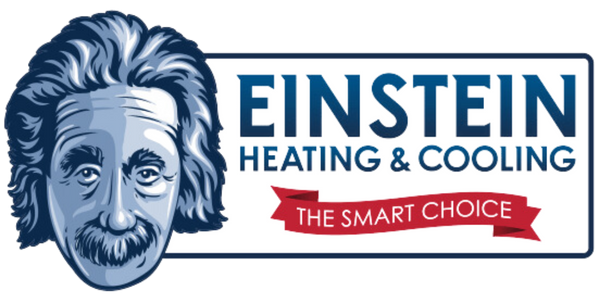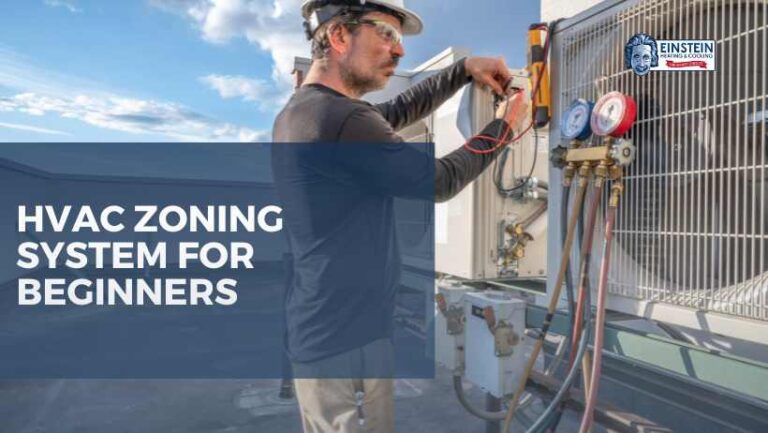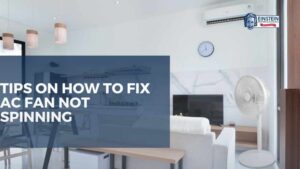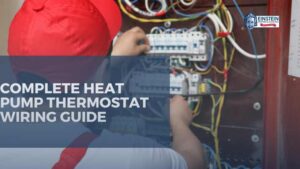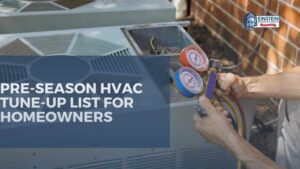Heating, Ventilation, and Air Conditioning (HVAC) systems play a crucial role in maintaining a comfortable indoor environment. Traditional HVAC systems operate by treating the entire home or building as a single entity, leading to temperature inconsistencies and unnecessary energy consumption. However, with the advent of an HVAC zoning system, it’s possible to address these issues and achieve enhanced comfort and efficiency. In this comprehensive blog post, we will explore the various factors contributing to the effectiveness of HVAC zoning systems.
Understanding How HVAC Zoning System Works
HVAC zoning systems are designed to divide a building or home into separate zones, each with its thermostat and independent temperature control. This innovative approach allows for personalized climate control in different areas, addressing the unique heating and cooling needs of specific spaces.
Zone Configuration
- Zoned HVAC is versatile, allowing homeowners or building managers to configure zones based on the layout and usage patterns. The number and size of zones can be tailored to accommodate specific preferences, optimizing the system for individualized comfort.
Thermostat Placement
- Proper placement of thermostats is critical for the effectiveness of zoned HVAC. Thermostats should be strategically located in areas that represent the overall temperature of each zone accurately. This ensures precise control and prevents the system from responding to localized variations.
Dampers and Airflow Control
- Dampers are essential components that control the airflow to different zones. They regulate the amount of conditioned air that enters each area, allowing for efficient temperature control. Dampers can be manually adjusted or automated based on temperature requirements and occupancy.
Energy Efficiency in HVAC Zoning Systems
One of the primary advantages of HVAC zoning systems is their ability to enhance energy efficiency. By focusing on specific zones rather than conditioning the entire space, these systems reduce energy consumption, resulting in cost savings and environmental benefits.
Reduced Energy Waste
- Traditional HVAC systems often waste energy by conditioning unoccupied or seldom-used spaces. HVAC zoning systems overcome this inefficiency by directing heating or cooling efforts only where needed, minimizing energy waste, and optimizing overall system performance.
Customized Scheduling
- Integrating HVAC zoning with programmable thermostats allows users to create customized schedules for each zone. This feature enables automatic adjustments based on occupancy patterns, ensuring that energy is only used when and where it is required.
Temperature Setbacks
- Another energy-saving feature of HVAC zoning systems is the ability to implement temperature setbacks during specific times. By slightly adjusting the temperature in unoccupied zones, these systems further reduce energy consumption without sacrificing overall comfort.
Enhanced Comfort with HVAC Zoning Systems
Beyond energy efficiency, zoned HVAC significantly contributes to enhanced comfort by addressing individual preferences and specific environmental considerations.
Personalized Temperature Control
- HVAC zoning allows occupants to set and maintain different temperatures in various zones. This personalized control ensures that each space is conditioned according to its unique requirements, providing optimal comfort for everyone in the building.
Consistent Comfort Levels
- In traditional HVAC systems, it’s common to experience temperature variations between different areas of a building. HVAC zoning systems eliminate this issue by maintaining consistent comfort levels in each zone, regardless of external factors or variations in the building’s construction.
Individualized Comfort in Multi-Use Spaces
- For areas with multiple functions or varying occupancy levels, such as living rooms or offices, HVAC zoning systems excel at providing individualized comfort. Each zone can be tailored to accommodate specific temperature preferences, creating a more satisfying environment for everyone.
Installation and Retrofitting Considerations
- Implementing HVAC zoning systems involves careful planning and consideration, especially when retrofitting an existing HVAC system.
System Compatibility
- Before installing an HVAC zoning system, it’s essential to assess the compatibility with the existing HVAC infrastructure. Some systems may require modifications or upgrades to integrate seamlessly with zoning components.
Professional Installation
- To ensure optimal performance and longevity, it’s advisable to hire a professional HVAC technician for the installation of a zoned AC system. Professional expertise ensures that the zoning components are correctly integrated, calibrated, and synchronized with the existing HVAC system.
Retrofitting Existing Systems
- Retrofitting an existing HVAC system with zoning capabilities is a viable option for those seeking to upgrade without replacing the entire system. However, it’s crucial to consult with professional HVAC technicians from Einstein Heating and Cooling to determine the feasibility and compatibility of retrofitting in specific cases.
Maintenance and Troubleshooting
Proper maintenance from professional HVAC technicians is key to maximizing the longevity and efficiency of HVAC zoning systems. Regular checks and prompt troubleshooting contribute to uninterrupted comfort and performance.
Regular Filter Replacement
- Filters play a crucial role in maintaining air quality and system efficiency. Regularly replacing filters prevents airflow restrictions and ensures that the HVAC zoning system operates optimally.
Damper Inspections
- Periodic inspections of dampers are essential to identify any issues affecting airflow control. Damaged or malfunctioning dampers can lead to uneven temperature distribution, undermining the effectiveness of the zoned AC system.
Thermostat Calibration
- Calibrating thermostats ensures accurate temperature readings and precise control over each zone. Incorrect thermostat readings can lead to discomfort and increased energy consumption, making regular calibration a crucial aspect of maintenance.
Cost Considerations on HVAC Zoning System
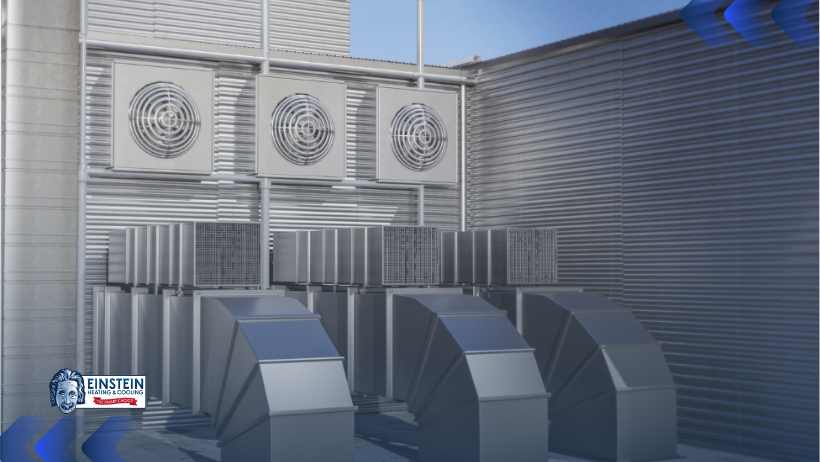
While HVAC zoning systems offer numerous benefits, it’s important to consider the initial costs and potential long-term savings associated with their implementation.
Initial Investment
- The upfront cost of installing an HVAC zoning system includes expenses related to equipment, professional HVAC installation, and any necessary modifications to the existing HVAC system. Homeowners and building managers should weigh this initial investment against the long-term benefits.
Return on Investment (ROI)
- Calculating the potential ROI of HVAC zoning systems involves considering factors such as energy savings, reduced maintenance costs, and increased property value. A thorough analysis can help determine the system’s cost-effectiveness over time.
Incentives and Rebates
- Various governments and utility companies offer incentives and rebates for installing zoned AC systems to encourage the adoption of energy-efficient technologies. Researching available programs can help offset the initial costs and improve the overall economic feasibility.
Future Trends and Innovations
As technology continues to advance, the HVAC industry is witnessing ongoing developments in an HVAC zoning system, paving the way for even more efficient and intelligent solutions.
Smart Zoning Controls
- The integration of smart technology allows for more sophisticated control over HVAC zoning systems. Smart thermostats, sensors, and connectivity features enable users to monitor and adjust zones remotely, promoting energy efficiency and convenience.
Artificial Intelligence Integration
- The incorporation of artificial intelligence (AI) into HVAC zoning systems opens up possibilities for predictive and adaptive control. AI algorithms can analyze usage patterns, weather forecasts, and occupancy data to optimize temperature settings automatically.
Improved Energy Storage Integration
- Advancements in energy storage technologies can potentially enhance the efficiency of HVAC zoning systems. By incorporating advanced batteries or other storage solutions, these systems can store excess energy during low-demand periods for later use, further reducing overall energy consumption.
Environmental Impact of HVAC Zoning Systems
Beyond the immediate benefits of comfort and energy efficiency, HVAC zoning systems also contribute positively to the environment.
Reduced Carbon Footprint
- By minimizing energy waste through targeted heating and cooling, HVAC zoning systems inherently reduce the carbon footprint associated with traditional HVAC systems. This aligns with the growing global emphasis on sustainable living and responsible resource consumption.
Compliance with Green Building Standards
- Many HVAC zoning systems align with green building standards and certifications. This not only enhances the environmental credentials of a property but may also contribute to eligibility for certain incentives or rebates tied to sustainable building practices.
Integration with Renewable Energy Sources
- As the world shifts towards renewable energy, HVAC zoning systems can be seamlessly integrated with solar panels, geothermal systems, or other sustainable energy sources. This further reduces reliance on traditional energy grids and promotes a cleaner and more sustainable approach to heating and cooling.
Potential Challenges and Mitigation Strategies
While HVAC zoning systems offer numerous advantages, it’s important to acknowledge potential challenges and implement strategies to mitigate them.
Uneven System Load
- In some cases, improper zoning configurations or usage patterns may lead to uneven system load, where certain zones receive more heating or cooling than necessary. Regularly reassessing zoning configurations and usage patterns can help identify and address these issues.
Initial Cost Concerns
- The initial cost of installing an HVAC zoning system can be a deterrent for some homeowners or businesses. To overcome this challenge, considering the long-term savings, incentives, and rebates available can help justify the upfront investment.
Compatibility Issues with Older HVAC Systems
- For those considering retrofitting, compatibility issues with older HVAC systems may arise. Engaging with experienced HVAC professionals during the planning phase can help identify potential challenges and develop effective solutions.
Regulatory Compliance and Building Codes
Before installing an HVAC zoning system, it’s crucial to ensure compliance with local building codes and regulations.
Permitting Requirements
- Obtaining the necessary permits is a fundamental step in installing an HVAC zoning system. Working with local authorities and ensuring compliance with building codes helps avoid legal complications and ensures the system meets safety standards.
Professional Consultation
- Consulting with HVAC professionals from Einstein Heating and Cooling who are familiar with local regulations can streamline the permitting process. These professionals can guide homeowners and building managers through the necessary steps and documentation required for compliance.
Continuous Monitoring for Compliance
- After installation, continuous monitoring is essential to ensure ongoing compliance with changing regulations. Regular assessments and updates, if necessary, help maintain the integrity of the HVAC zoning system within the framework of local laws.
How To Install Room-By-Room Zoning In an HVAC System
Materials Needed:
- Smart or programmable thermostats
- Motorized dampers
- Control panel or zoning system
- Additional wiring (if required)
- Screwdrivers, wire strippers, and other basic tools
- Step 1: Assess Your HVAC System
- Before starting the installation, assess your existing HVAC system to ensure compatibility with room-by-room zoning. Confirm that your HVAC system is in good working condition, and check for any necessary upgrades or modifications.
Step 2: Choose Smart Thermostats
Select smart or programmable thermostats compatible with room-by-room zoning. These devices will allow you to control the temperature in individual rooms, optimizing comfort and energy efficiency. Install these thermostats in each room you want to include in the zoned AC system.
Step 3: Install Motorized Dampers
Motorized dampers are crucial for regulating airflow to specific zones. Install these dampers in the ductwork leading to each room, ensuring they are properly sealed to prevent air leakage. Connect the dampers to the smart thermostats for centralized control.
Step 4: Wiring and Connections
Ensure proper wiring and connections between the smart thermostats, motorized dampers, and the HVAC system. Follow the manufacturer’s instructions for wiring, and double-check the compatibility of all components. If additional wiring is needed, make the necessary adjustments.
Step 5: Install Control Panel or Zoning System
Integrate a control panel or zoning system to coordinate the operation of the smart thermostats and motorized dampers. Follow the manufacturer’s instructions for installation and programming to ensure seamless communication between components.
Step 6: Test the System
After completing the installation, test the room-by-room HVAC zone to verify proper functionality. Check each smart thermostat’s ability to control the associated damper and adjust the temperature independently. Fine-tune settings as needed for optimal comfort.
Step 7: Regular Maintenance
Maintain your room-by-room HVAC zone by periodically checking for any issues, such as air leaks, malfunctioning dampers, or thermostat errors. Schedule regular HVAC system maintenance to keep everything running smoothly.
Conclusion
HVAC zoning systems represent a significant leap forward in optimizing comfort and energy efficiency in both residential and commercial settings. As technology continues to evolve, the future holds even more promising innovations that will continue to enhance the performance and sustainability of HVAC zoning systems. Whether you are considering a new installation or retrofitting an existing system from the experts of Einstein Heating and Cooling, understanding the key factors discussed in this blog post is essential for making informed decisions that align with your comfort and efficiency goals.
